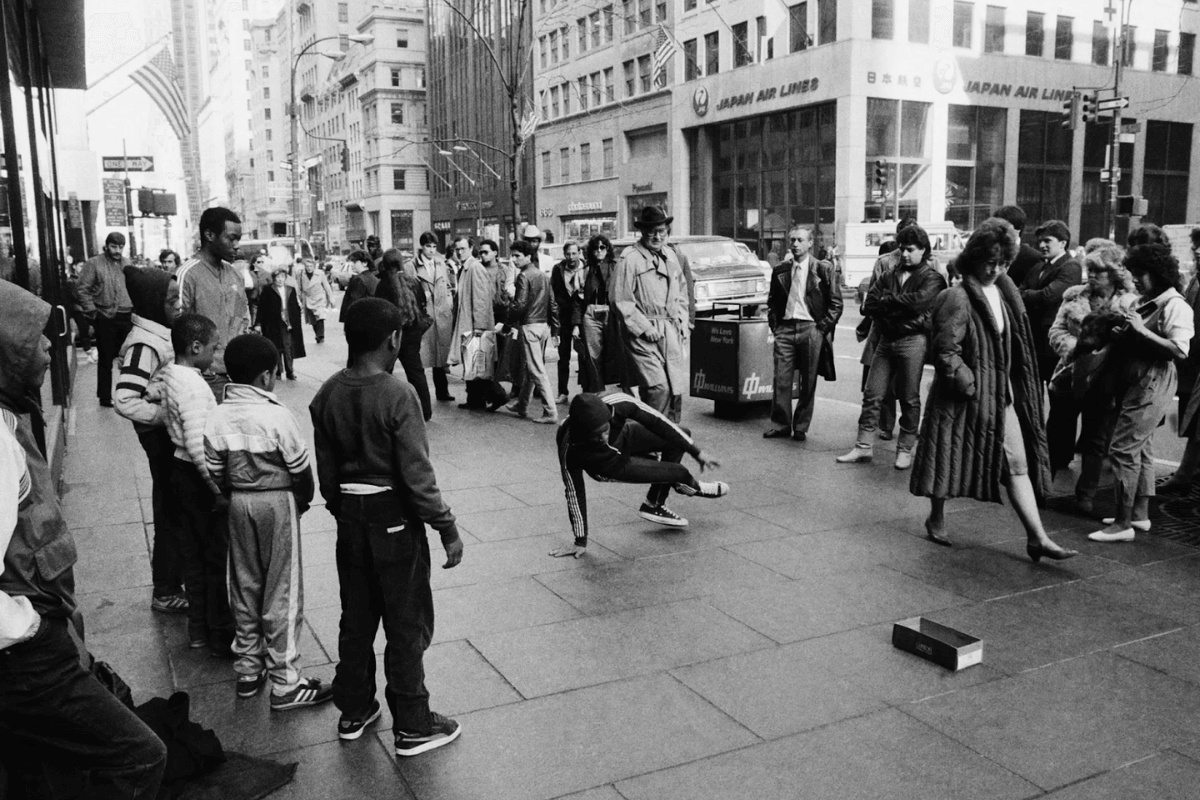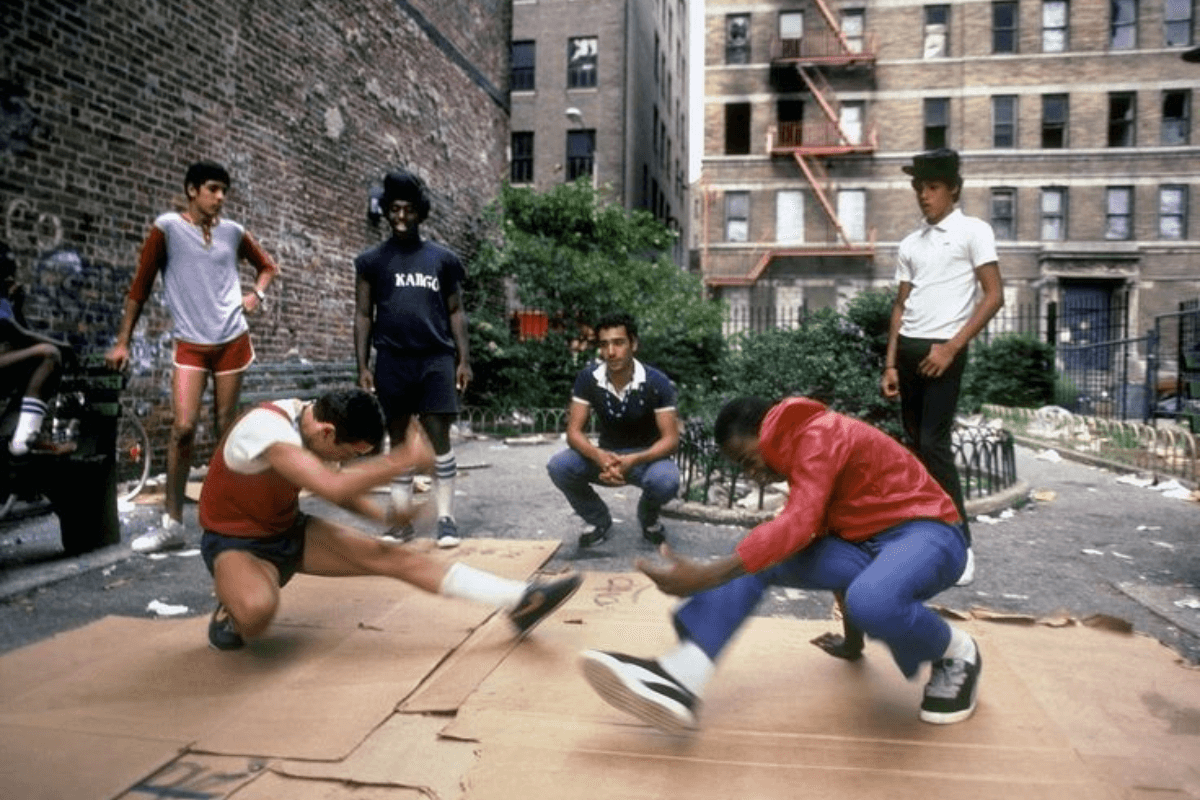Welcome, dance enthusiasts! If you’re ready to take your breakdancing skills to the next level, you’ve landed on the right page. In this comprehensive blog post, we’re diving into the intricate world of footwork, focusing on the renowned 10-step tutorial. This blog post will guide you through this rhythmic journey, drawing from experience of an breakdancing expert.
But hey, fear not! This tutorial isn’t a farewell; it’s a doorway to endless possibilities. Stick around as this post not only guides you through the 10-step routine but also sprinkles in a bit of magic – variations and examples of moves with more than 10 steps. Strap in, as we break down the basics and explore the creative realms of footwork.
About footwork in breakdancing
Before we start learning the 10-step dance routine, let’s talk about the basics of footwork in breakdancing. Understanding these basics is like laying the groundwork for a cool dance journey.
Definition
What is footwork in breakdancing? Footwork, also known as downrock, floor moves, floor rock, or floor work, is a fascinating aspect of breakdancing where dancers perform intricate and lively movements close to the floor, usually involving both hands and feet. It’s like a dance that happens down low, and it’s a key part of what makes breakdancing special compared to other types of dance.
Think of footwork as the heartbeat of breakdancing. It’s what gives the dance its unique energy and sets it apart from other dances. When breakdancers do footwork, it’s like they’re telling a story with their movements, and this storytelling aspect is what makes breaking so expressive.
In the world of breakdancing, footwork isn’t just about fancy moves; it’s a way for dancers to show who they are and what makes their dancing special. Each breakdancer might have their own way of doing footwork, adding their personal touch to the dance. So, footwork is not just a part of the dance routine; it’s a form of self-expression for the dancers.
When breakdancers do footwork, they’re not just showing off their skills – they’re also connecting with the music. The movements are like a conversation between the dancer and the beat of the music. This connection to the rhythm is what makes footwork so exciting and enjoyable to watch.
Imagine breakdancers spinning, twisting, and moving close to the ground, telling a captivating story with their hands and feet. This is what footwork is all about – a dynamic and expressive part of breakdancing that adds life and soul to the dance. So, next time you see a breakdancer doing footwork, remember, you’re witnessing the heartbeat of the dance, the part that makes breaking truly special.
History of footwork

Exploring Footwork’s Roots
The history of foundational footwork in breakdancing is like a vibrant tapestry, woven with identifiable trends, yet rich in diversity due to the unique styles of each dancer. Footwork, as we know it today, has an intriguing evolution that traces back to the early 1970s.
In those early years, breakers would incorporate drops into their routines, taking advantage of the extended break in the music to spend more time on the floor. This extended break became a creative space “to invent and experiment.” According to Michael Holman, footwork emerged as breakers strategically used their arms and hands to support their bodies, freeing their feet and legs to execute gymnastic steps, shuffles, and sweeps.
The pioneers of these innovative moves were the Legendary Twins and Clark Kent. Clark Kent himself claims that before their time, there were no distinct floor moves. He proudly declares, “that’s where we [Clark Kent and the Legendary Twins] were known for changing the game.” However, even before them, Dancin’ Doug had a unique “motorcycle” routine, featuring a move where he would “drop to the floor and spin.”
Foundational Moves Emerge
The early footwork landscape was mainly composed of signature moves, such as the Twins’ spinning technique or JC’s iconic “windmill.” The mid-to-late 1970s marked a significant shift when footwork’s foundational moves began to surface, thanks to the efforts of six influential crews. The Crazy Commandos, in particular, are credited with developing the six-step, often considered the cornerstone move in breaking.
As we transitioned into the 1980s, the foundation of footwork solidified and saw further development from renowned crews like the Rock Steady Crew, the Dynamic Rockers, and the New York City Breakers.
A European Footwork Renaissance
The late 1980s and early 1990s witnessed a significant advancement in footwork, especially in Europe. Breakdancing communities in France, Germany, Italy, England, and Scandinavia played pivotal roles in pushing the boundaries of footwork. Paris City Breakers and Aktuel Force in France pioneered a fluid, sweep-based style, while Battle Squad in Germany introduced a diverse array of novel footwork moves.
Scandinavian breakers like Mad Nico and Freeze emphasized originality, direction changes, level changes, lateral movement, and slides in their footwork. Threads and wraps, integral elements of footwork, evolved rapidly in the 1990s, particularly in Toronto and California, influenced by Mr. Wiggles’ footwork, European styles, and the “leg hop” thread.
The Name Game
Interestingly, footwork often goes unnamed or carries different names across various times and places. For instance, Karate Manny reminisces about the lack of names for moves, saying, “we didn’t really name our moves.” He shares an example, “my side-to-side footwork… People call it the ‘CC Rock.'” Similarly, Orko highlights that in the early days, moves were often associated with individuals rather than having universally agreed-upon names.
How to start the 10-step footwork?
Now, let’s jump into the nitty-gritty of the 10-step routine.
- Picture yourself at position 0, ready to spin clockwise.
- Begin with your left hand, moving through counts 0, 1, and 2.
- Follow up by stepping forward with your right leg on count 3, then take a step backward with your left leg on count 4.
- Reverse direction by going backward with your right leg, hitting counts 0, 1, 2, 3, 4, and 5.
- Keep the groove going by moving forward with your right leg on count 6, followed by counts 7, 8, and 9.
- Throw in a hook on count 9, and gracefully wrap it up by going back to position 0 on count 10.
Slow and steady, let’s break it down: 1, 2, 3, 4, 5, 6 – move forward with the right leg; 7, 8, 9 – gracefully step with the left, right, and hook; and finally, 10 – glide back to position 0.
Tips for successful 10-step footwork
Now, before we dive into the variations, let’s talk about some essential tips for success. Remember, the devil is in the details:
- Small steps, big impact: Keep those steps small, my friends! If you go too wide, you might find yourself unintentionally spinning around. The goal is to maintain control and always face the front.
- Precision over speed: It’s not a race; it’s a dance. Focus on the precision of each move. Clean, distinct steps will make your routine stand out.
- Two-way practice: Just like the previous tutorials, don’t forget to practice on both sides. It ensures you’re well-rounded and can bust a move no matter which way you’re facing.
Variations
Now, let’s talk about the spice of breakdancing – variations. While the 10-step routine is the backbone, the beauty lies in making it your own. It’s time to unleash your creativity and add a personal touch to your dance.
Practice reminder for 10-step footwork

Before we jump into the creative abyss, a quick reminder – practice both sides of each footwork step. It’s like learning to write with both hands; it just makes you an all-around dance genius.
Create Variations
Imagine this – you’ve mastered the 10-step routine.
- Now, add just one more step. It’s like upgrading your dance software. Let’s call it the 11th step. Follow the tutorial’s lead, seamlessly integrating this extra step into the routine. Feeling bold? Try two extra steps – an 11th and a 12th. Now, watch the dance floor become your canvas.
- Feeling adventurous? Let’s aim for the stars. How about a 13th step? Random, experimental, and utterly unique. The 13th step emerged from the dance chaos, a testament to the infinite possibilities within your creativity.
- Now, if you’re up for the challenge, go ahead and add even more steps. Who knows? You might discover the next groundbreaking dance move.
Remember, there are no rigid rules here. Breakdancing is an art form, and your individuality is the brushstroke that paints the canvas of your routine.
Summary
This post is an immersive and informative guide for both beginners and experienced dancers to mastering the 10-step routine, spiced up with the thrill of creating personalized variations.
- Starting with the basics, the tutorial walks you through the initial steps, emphasizing the importance of small, controlled movements to avoid spinning into chaos. Tips provided include the significance of practicing on both sides, ensuring a well-rounded mastery of each footwork step.
- The blog post encourages creativity with variations, offering a platform to experiment and create unique dance moves. It introduces the concept of adding extra steps beyond the 10-step routine, challenging dancers to explore their creativity and share their experiments on social media.
As we wrap up this 10-step tutorial journey, we really hope you find this post helpful in assisting you explore the world of breakdancing footwork. The dance floor is your canvas, and the 10-step routine is just the beginning. Keep practicing, creating, and pushing the boundaries of your dance expression.
Stay tuned for the next tutorial, where we’ll delve into footwork patterns. It’s going to be an exciting exploration of rhythmic movements and intricate sequences. Until next time, keep breaking, keep creating, and let the dance floor be your playground. Peace and groove on!
If you’ve enjoyed this tutorial and want to have a more detailed tutorial, please check out YOUTUBE link below!


Leave a reply